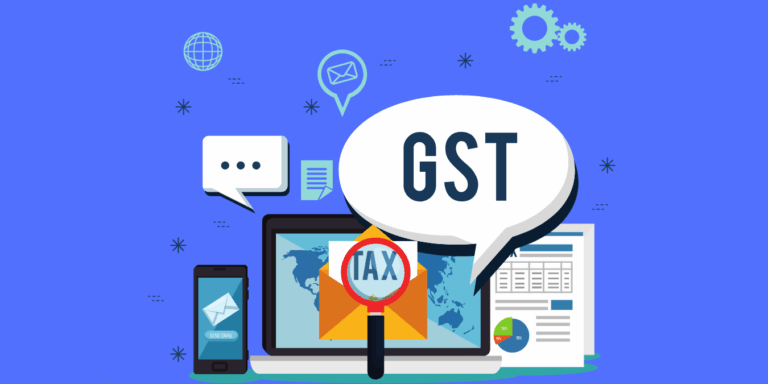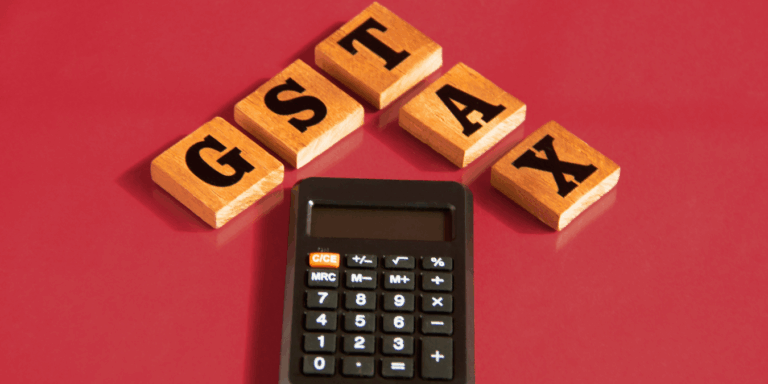
Unlocking India’s Small Business Taxes in 2025: What You Don’t Know Could Cost You!
The hidden secrets of India’s small business taxes in 2025! Discover surprising tax reliefs, little-known compliance hacks, and game-changing reforms that could save you thousands—or cost you millions. Are you missing critical benefits that successful entrepreneurs know? Don’t file another return before reading this eye-opening guide.
Did you know that while India boasts over 5.8 crore registered micro, small, and medium enterprises (MSMEs), most owners remain unaware of certain crucial tax reliefs and lesser-known compliance changes introduced in 2025? These hidden aspects could be the difference between suffocating under unexpected tax burdens and unlocking growth capital for your business. What the government quietly unveiled in 2025 about tax slabs, GST reforms, and digital compliance tools is set to transform the small-business tax landscape like never before—if you know where to look.
The Backbone of India’s Economy: MSMEs and Their Tax Role
MSMEs make up more than 99% of Indian enterprises and contribute roughly 30% to the GDP, employing over 110 million people. Their tax contributions and compliance hassle have been a pivotal focus area for policymakers keen on spurring economic growth and job creation.
As of January 2025, over 5.84 crore MSMEs are registered on the Udyam portal, highlighting the explosive digital formalization of these businesses. With this rise, the government took bold steps to rationalize and simplify taxation aimed specifically at this crucial sector, integrating digital compliance automation, GST reforms, and TDS rationalization to ease their burden.
Surprising Small-Business Tax Rates and Schemes in 2025
Multiple Entity Types, Multiple Tax Realities
Small businesses may be registered as sole proprietorships, partnerships, Limited Liability Partnerships (LLPs), or private limited companies, each with distinct tax regimes:
- Sole Proprietorships: Taxed at individual income tax slabs up to 30%, plus cess.
- LLPs: Single flat tax rate of 30%.
- Private Limited Companies: Can opt for concessional flat-rate schemes like 22% under Section 115BAA, or as low as 15% under Section 115BAB for manufacturing new companies.
Presumptive Taxation: The Small Business Savior
Under Sections 44AD and 44ADA, businesses with turnover up to ₹2 crore can pay tax on presumptive income, effectively 8% of turnover, reducing compliance complexity by waiving detailed accounting and audits. This scheme remains one of the most underestimated tax-saving tools.
GST Reforms 2025: A Game-Changer for MSMEs
Effective September 22, 2025, India introduced a major GST reform replacing multiple slabs with streamlined rates: 5% on essential goods, 18% for most products/services, and 40% on luxury and sin goods. Crucially for small businesses:
- Faster Registration: Low-risk businesses now get GST registration within 3 working days, a critical relief to new startups.
- Simplified Refunds: Exporters and MSMEs benefit from automated refunds within 7 days, enhancing cash flow.
- Lower Compliance Costs: Reduced audit requirements and improved technology-driven filings ease tax compliance pressures for micro/small firms.
- GST Rate Impact: Small traders often pay under composition schemes with simplified quarterly returns, yet still need timely invoices for input credit claims that reduce tax outflows.
What are Common Tax Mistakes Small Business Owners Make
Common tax mistakes small business owners in India make in 2025 include pitfalls in GST compliance, record-keeping, and choosing tax regimes, leading to penalties, cash flow issues, and audits. Major errors include:
- Missing or delaying GST return filings, which triggers penalties and interest.
- Claiming incorrect or ineligible Input Tax Credit (ITC) without proper documentation, leading to reversals and fines.
- Not reconciling GST returns properly, causing ITC mismatches and scrutiny (especially discrepancies between GSTR-1, GSTR-3B, and GSTR-2A/2B).
- Misclassifying goods/services with wrong HSN/SAC codes, resulting in wrong tax rates and payments.
- Ignoring mandatory GST compliance for e-commerce transactions and failing to issue proper tax invoices with details like GSTIN.
- Avoiding filing NIL returns even during periods of no transactions.
- Poor record-keeping such as mixing personal and business finances, incomplete financial data, leading to errors and missed deductions.
- Not claiming available deductions and credits including business expenses and Section 80C investments.
- Delaying GST or VAT registration despite crossing turnover thresholds.
- Misclassifying employees as independent contractors to reduce tax obligations, which can backfire legally.
- Choosing wrong Income Tax Return (ITR) forms or tax regimes without proper calculation resulting in overpayment.
- Failing to reconcile turnover declared in GST and ITR, which can trigger audits from tax authorities.
Rationalized TDS & Digital Compliance: Unlocking Working Capital
One less talked-about reform is the rationalization of TDS (Tax Deducted at Source) rates on professional services from 10% down to 5% for startups and small enterprises. This change aims to ease liquidity crunches caused by excessive tax withholding, a major pain point for Indian MSMEs.
Digital tax compliance automation has also vaulted forward with prefilled Income Tax Returns incorporating bank interest, capital gains, dividend income, and GST sales data. This automation drastically cuts down the hours small business owners spend on tax filings, mitigating human errors that often lead to penalties.
How will Tax Reforms Impact Small Businesses in India in 2025
Tax reforms in 2025 are poised to significantly impact small businesses in India by simplifying compliance, reducing tax burdens, and enhancing liquidity, thereby creating a more business-friendly environment aimed at boosting growth and formalization.
Key impacts include:
- Simplified GST Compliance and Rationalized Rates
The overhaul of GST slabs into three broad rates (5%, 18%, and 40%) has streamlined taxation and reduced complexity. Faster GST registrations and automated refund processes improve cash flow, which is vital for small businesses often constrained by working capital. Reduced audit requirements and simplified quarterly returns under the composition scheme lessen compliance costs and time investments. - Rationalized TDS Rates and Easier Withholding Norms
Lowered Tax Deducted at Source (TDS) rates on professional and contractual payments help ease liquidity pressure on small businesses by reducing excessive tax withholding, which was a common cash flow bottleneck. - Presumptive Taxation Schemes Encouraged
Continued emphasis on presumptive taxation under Sections 44AD and 44ADA incentivizes small businesses to opt for simplified tax regimes with lower compliance and audit burdens, encouraging more MSMEs to enter the formal sector and enabling easier tax filing. - Digital Compliance and Automation
The government’s push for digital tax filing platforms integrated with GST and income tax data speeds up processes, reduces errors, and lowers the cost of compliance. Prefilled returns and automated data reconciliation enhance taxpayer convenience and minimize risks of penalties arising from mismatches. - Tax Incentives and Sector-Specific Reliefs
New tax incentives for startups, manufacturing units, and green MSMEs promote innovation and sustainability within the small business ecosystem. These include concessional tax rates under Sections 115BAA and 115BAB for manufacturing and eco-friendly businesses and anticipated environmental tax credits.
Overall, 2025 tax reforms mark a decisive shift toward easing tax barriers and improving operational efficiencies for small businesses in India. By embracing these reforms, entrepreneurs can optimize their tax liabilities, improve compliance, and compete more effectively in a rapidly evolving economy.
Hidden Tax Reliefs and Little-Known Tips for 2025
- Avoiding Mandatory Audit Under Presumptive Taxation
By opting for presumptive income schemes, many small businesses dodge the costly annual tax audit, something often overlooked but with huge cost-saving potential. - Claiming Business-Related Expenses
All legitimate business expenses—office rent, utilities, travel—reduce taxable income. Many small entrepreneurs neglect monthly documentation or fail to claim home office expenses, a big leakage point. - Leveraging Section 80C for Investments
Investments up to ₹1.5 lakh in tax-saving instruments like ELSS, PPF, or NSCs lower taxable income even for businesses owner-entrepreneurs, providing dual financial growth and tax relief. - Choosing the Right Entity for Optimal Taxation
Transitioning from sole proprietorship to LLP or private limited company can unlock lower flat tax rates and better access to business credit, as well as reduce personal liability.
Emerging Trends Shaping Small-Business Taxation
- Increased Global Competitiveness: India’s tax reforms aim at attracting foreign direct investment into MSMEs by offering more predictable tax environments.
- AI and Automation in Tax Filing: Future-forward enterprises are adopting AI tools to optimize tax compliance, error-checking, and even tax planning—cutting operating costs.
- Environmental Taxes: New levies on carbon footprints and incentives for green MSMEs are expected soon, promising both challenges and growth avenues.
Actionable Takeaways for Indian Small Businesses in 2025
- Register your business under Udyam for official MSME benefits and simplified compliance.
- Evaluate your business entity type annually for tax optimization opportunities.
- Avail presumptive taxation schemes to reduce audit costs and complexity.
- Stay updated on GST registration timelines and filing deadlines to avoid penalties.
- Use digital accounting software integrated with GST and ITR to automate tax filings and improve accuracy.
- Monitor TDS rates and compliance to maintain healthy working capital without surprise deductions.
- Invest proactively in tax-saving instruments under Section 80C to reduce taxable incomes.
- Keep complete business expense records, including home office deductions where applicable.
What Lies Ahead: Future Taxation Trends to Watch
India’s tax landscape is evolving towards greater transparency, digitization, and incentives for sustainable growth. Upcoming policy proposals hint at enhanced reliefs for startups, potential universal basic income tax adjustments, and stricter environmental compliance taxes. Being ahead in tax strategy will separate thriving small businesses from those struggling to survive.
Stay tuned as these reforms unfold and the government fine-tunes the balance between revenue collection and business encouragement. The tax game in India is about to get smarter—and so should you.

































